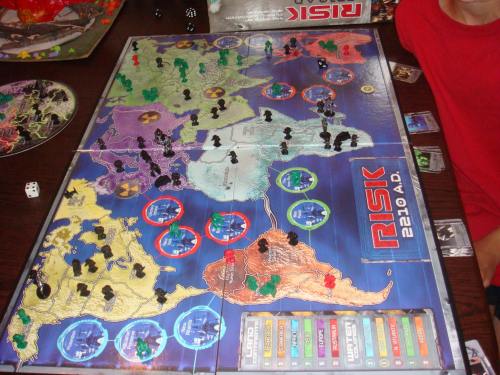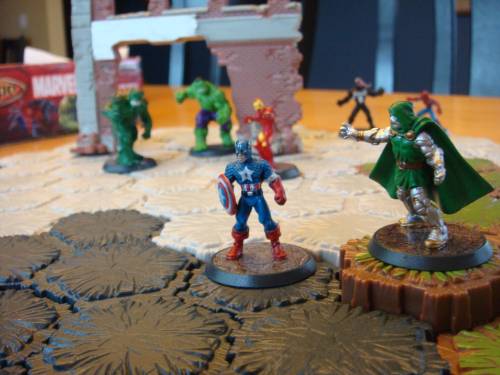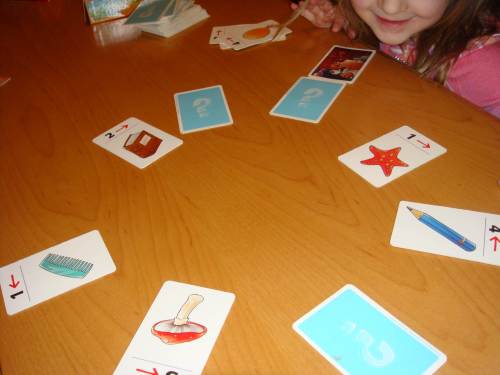Board games are good for the brain, obviously, but they’re good for the soul too. They draw people together, create friendly competition, ask for your attention, and reward you for your focus.
We game in our household year-round, but the snowed-in season has brought a flurry of opportunities to gather at the kitchen table with TVs off. But not just for any old game: Not all board games are created equal.
Games of pure chance are time-fillers on par with flipping coins. I know kids love Sorry and Trouble. I know this. But who cares how many die rolls it takes to get around a board?
The Sorrys and Troubles and UNO Deluxe Spin Ultimates of the world constitute a vast swath of the Target game aisle. That place saddens my heart every time I walk past it, expecting something magic to pop out, and getting instead a weary mix of played-out classics (original Monopoly is really not that fun; it gets no better when rebranded with puppies or sports teams) and classless junk made of cheap plastic and cardboard (with names like “Don’t Wake the Schoolmarm!” and “French Fry Frenzy!”)
Uninspiring.
As a wee Drew, I loved me some Mousetrap. I would set that contraption game up by myself and play rat catcher all afternoon. But today, oy. The only thing worse than the cover art on the modern version is its flimsy … flimsiness … that permeates the air when you open the box. This one doesn’t feel satisfying to snap together, and it fell apart in our hands shortly after opening. (Little cardboard chits of cheese are still floating around my house years later. What were those things for? Who knows.) None of us fell in love with the plasticrap in that box.
Thus, behold me now: an unabashed Game Snob. I look for games that ask for more noodling; for premises that tickle the fancy; for tasks that appear simple but are deceivingly layered; and even for parts of satisfying quality. There’s nothing that feels so good as a solid wood gamepiece in the hand as it is slammed onto the table as an act of final triumph over your opponents.
Here then is the hit parade, the games we’ve been getting out with regularity this season. These are the ones we can play as a family, but children are not required to be present before busting one of them out. (If you can find them. You’ll need to go further afield than dear old Target. But oh, it is worth it.)
Ticket to Ride (by Days of Wonder)
A modern Colossus of games in my opinion. Simple rules, object-oriented play, decisions to be made, gambits to be gambled upon. Even the 6-year-old (above) could understand gameplay, though he is more comfortable paired with an adult.
In Ticket to Ride, players connect cities by building their own railways. The mechanic is straightforward: Match cards in your hand with colored spaces on the board to claim a route. Need to connect Denver and Duluth? That’s six orange spaces; you’ll need six orange cards. From this simple gameplay opens up a rich (but not *too* rich) series of decisions to make about when and how to connect your given destination cities while blocking (or avoid getting blocked by) your opponent. Great replay value.
Portobello Market (by Playroom Entertainment)
Looks like Ticket to Ride, plays totally differently. Portobello Market requires a leap of abstraction. Your job is to place “stalls” in the famous London flea market, then score points by attracting rich customers to your lane. Your available choices of what to do next are small: Place another stall? Invite a customer over? But the variety provided therein makes for a wealth of decisions — or at least just enough decisions to keep an adult (or an 9-year-old) from going mad with “analysis paralysis.” It looks more complicated than it is, and it only lasts 30 minutes or so when you get the hang of it. Just right.
Risk (plus the variants 2210 A.D. and Godstorm, all by Hasbro)
Classic Risk gets good play at our house. Over at Board Game Geek, where real Game Snobs make me look like Peter Populist, a great debate rages over whether classic Risk is a truly great strategy game or a predictable relic from the era of the Game of Life. I say it is an addictive gateway to more modern fare, and a welcome way to spend time … every now and again. Risk spawned a number of heavily themed variants like the post-apocalyptic 2210 (above), and the ancient-mythological Godstorm, both of which we enjoy greatly. (We also own the Lord of the Rings version, but found it wanting.) These variant games have real drawbacks: The rules are dense and easy to get wrong, and the number of variables gets overwhelming at times. The addition of “power cards” adds a great deal more reading to perform special attacks or defensive maneuvers, which makes this more age-prohibitive than other games. (It’s one thing to be able to read, it’s another thing to decipher gamerspeak.) As a result, these are good indulgences that fill you up when you crave them. Just not too often.
Heroscape (by Hasbro)
Constructable battlefields? Classic heroes in miniature? Comics-accurate superpowers reduced to simple mechanics? Check, check, check. I’m in! Like many tabletop miniatures games, each of your unique troopers has special powers that can be activated by die rolls to damage their opponents. What makes Heroscape special is a versatile tile system that can form as many battle maps as you can imagine; an innovative die-rolling system that’s fun to reconcile; the ability to run special scenarios, so it’s not always fight-to-the-death; and, ahem, the Marvel license. (There are scads of other generic Heroscape minis you can recruit — Vikings, Knights Templar, vampires, robots — but make mine Marvel. DC, where are you?)
13 Dead End Drive (by Milton Bradley)
Sometimes you just want a game board with 3D pieces that replicate a mansion populated with characters you’re trying to kill. The appeal here is the goofy factor of triggering the chandelier trap to fall on unsuspecting game pieces, or tipping the suit of armor onto their heads. There’s some simple strategy involving which characters you should move closer to their dooms and which characters you can maneuver to safety to claim a dead widow’s inheritance. Just enough decision-making to cause a 5-year-old to pause in contemplation, coupled with just enough silly backstabbing to make that contemplation worth it.
Sherlock (by Playroom Entertainment)
Put away that boring box of Memory cards. No one wants to set up that mass of tiles anyway – and there’s always one of the pairs that’s half missing. Where’s the other hot dog? Why do we have only one tennis shoe? Bah, make room for Sherlock, the easy-to-digest memory game with a kinetic kick. In a circle of eight face-down cards, players must recall what objects are on the hidden cards. When you guess one right, the top of each card gives you a direction (left or right) and a number of spaces to move the “Sherlock” character. This system automatically tells you which card to recall next. When Sherlock lands on a face-up card, you keep it, and replace it in the circle with a new object card. This makes the game renewable — it can last as long as you can stand. Plus it’s is WAY easier to clean up and set up. My daughter has been awesome at this since she was 4.
Catch-a-Match (by Playroom Entertainment … again!)
A simple deck of cards that can go anywhere, including doctor’s offices, restaurants and the lines at Disney World. On each of the 15 cards, there are 15 differently colored objects. On any two pair of cards, only one set of those objects will match exactly. Find it first, win the round. I don’t know how it works, it just does. Try it yourself. What object — and only one object — on the two cards above is exactly the same? (Harder than it looks, right?)














